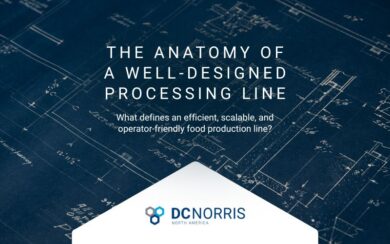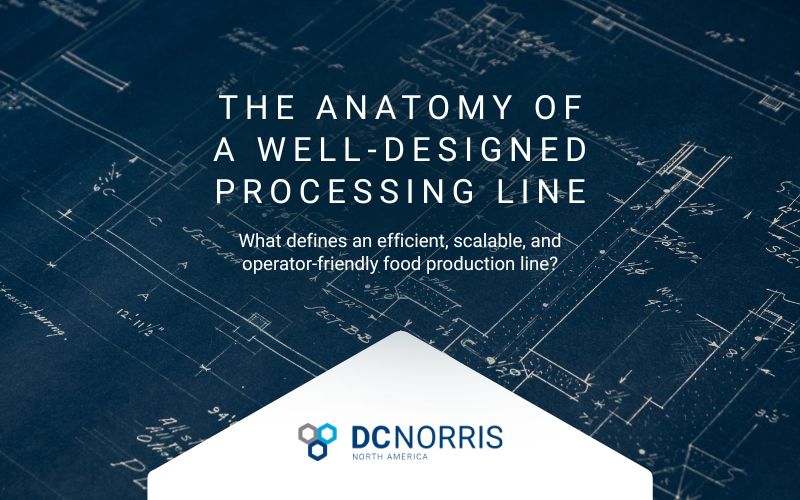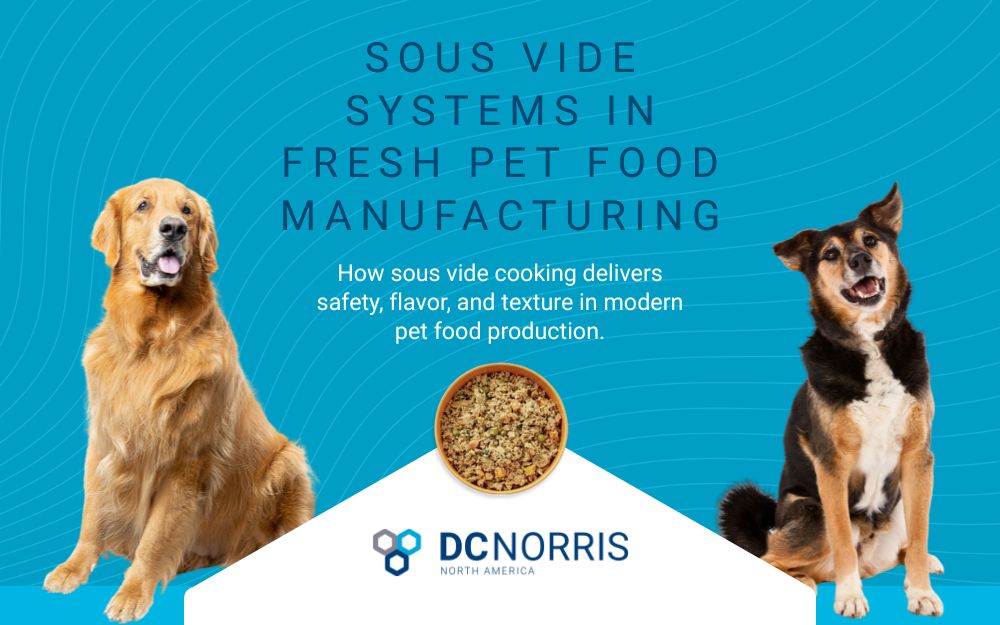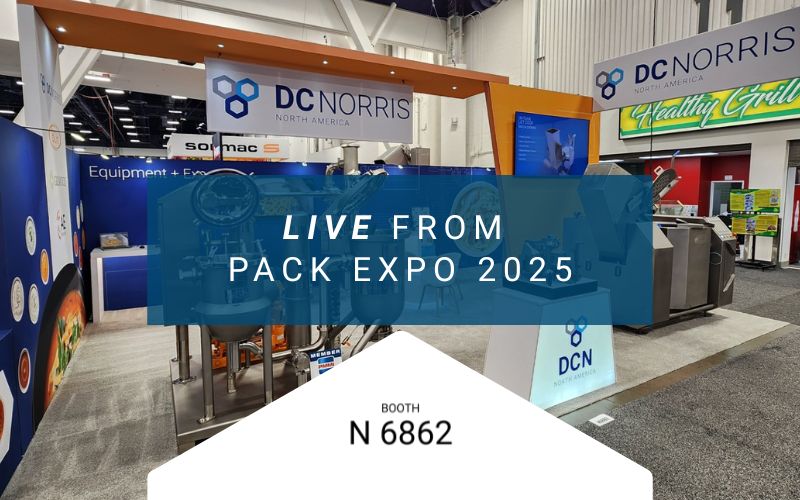 In This Article:
In This Article:
A well-designed food processing line balances throughput, safety, and scalability. Every layout choice, from equipment placement to product flow, affects performance, yield, and labor. This article explores the essential elements of great line design and how DC Norris North America engineers systems that perform reliably today and scale for tomorrow.
The Anatomy of a Well-Designed Processing Line
When production slows, the cause is often not a single machine but how the entire line works together. A well-designed food processing line functions as an integrated system where each component supports consistent product quality, operator safety, and reliable output across every shift.
1. Start with flow, not footprint
The most efficient processing lines are designed around product and people flow rather than square footage. Ingredients should move in one clear direction from raw to finished state without unnecessary handling or cross-traffic.
Designers consider factors such as:
- Clear separation between raw and cooked zones to ensure food safety.
- Short transfer distances to minimize temperature loss.
- Logical operator work zones to support efficiency and safety.
At DC Norris North America, our engineers start by mapping product movement, ingredient prep, and operator interaction before any equipment is selected. The result is a line that moves naturally and performs consistently.
2. Engineering precision meets production reality
Every facility has its own set of constraints. Ceiling heights, drain placement, and utility access all influence system design. Standard templates rarely meet real-world needs.
We use 3D modeling and layout simulation to confirm equipment placement and validate cleaning access, egress routes, and CIP (clean-in-place) systems before fabrication. This level of precision eliminates costly surprises during installation and ensures the line meets both engineering and safety standards.
3. Build in flexibility
Consumer preferences and product portfolios change constantly. A processing line should adapt as easily as production goals evolve.
Designing with modular systems, scalable automation, and configurable cooking or chilling technologies allows manufacturers to expand capacity or shift product types without major rebuilds. Our clients often start with a single kettle or sous-vide tank and expand in stages as demand grows.
4. Integrate control and data
Modern food manufacturing depends on precise control. Integrated HMIs, recipe management, and batch data capture help manufacturers monitor quality, maintain consistency, and improve energy efficiency.
When controls across heating, mixing, and cooling communicate effectively, downtime decreases and performance becomes predictable.
5. Design for maintenance and sanitation
Easy access for maintenance is an essential part of line design. When service doors are reachable, hoses are well managed, and CIP lines are direct, cleaning becomes faster and safer.
This level of detail comes from experience. The DC Norris North America team’s decades of service work in plants across North America inform every decision from piping layout to operator access.
6. Validate performance through commissioning
A design only succeeds when it performs on the floor. We support every project through commissioning, operator training, and performance testing. By measuring metrics such as throughput, yield, and cleaning time, we confirm that systems perform to specification.
Why design defines reliability
A poorly designed line adds hidden costs through inefficiency, rework, and lost uptime. A well-designed one pays for itself through repeatable performance, reduced labor, and better energy management.
At DC Norris North America, we believe the difference between a machine supplier and a true partner lies in how a system performs as a whole. That is why we engineer each line to deliver measurable value from the first production run forward.
Commonly Asked Questions About Processing Line Design
Q1: What makes a food processing line well-designed?
Q2: How does DC Norris North America approach line design?
Q3: Why is flexibility important in processing line design?
Q4: What are the benefits of integrated control systems?
Q5: How does a well-designed line improve ROI?
Bring In The Best™
Our tagline embodies the DC Norris North America philosophy and promise to our clients. It reflects our ongoing commitment to represent and deliver the best systems, the best brands, and the best engineering expertise in the industry. “Bring In The Best” is both an invitation and a standard: clients bring in DC Norris North America when they need to solve complex production challenges, optimize efficiency, or gain a competitive edge. It signifies how we unite top-tier global partners, leading technologies, and seasoned engineering insight to help every client bring their best products to market.
When you’re ready, so are we. You can request a call back here.



